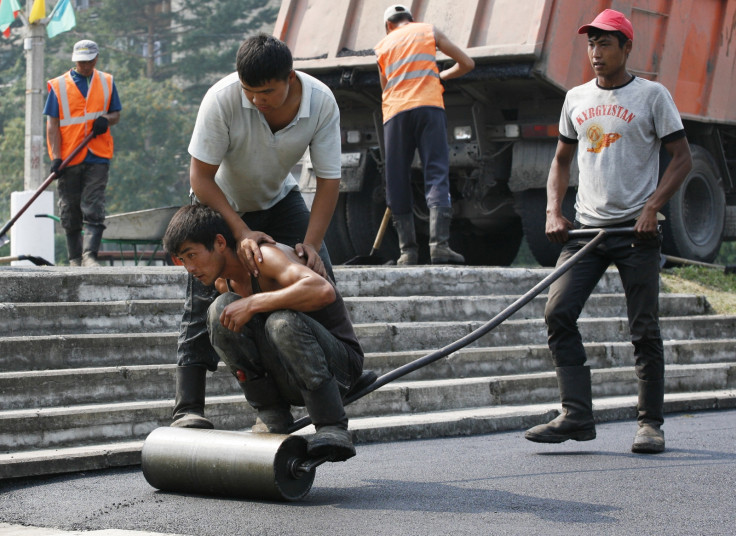Russia's ruble collapse shakes Central Asian neighbours

Ordinary Russians are not the only ones to suffer the consequences of the ruble collapse and hike in interest rates to 17%.
While people in Moscow are already queueing outside foreign exchange shops to get rid of the ruble, eyeing the current 9.1% price inflation rate, neighbours of the "Russian bear" are likely trembling in fear.
Until a year ago, the Russian economy was flying high on the wings of a seemingly endless oil-fuelled boom, which showered economic migrants with hard cash to send back to their origin country. With the economic depression on the horizon and investors pulling their money out of the country by the billion each month, Russian companies have already started cutting wages and making redundancies.
Poor former Soviet republics with a troubled recent past like Tajikistan and Kyrgyzstan are suffering the most. Millions of Tajik migrants live in Russia and send much of their salary back home. According to World Bank data, remittances in Tajikistan make up 42.1 % of the Central Asian republic's GDP, making it the world's biggest recipient.
A staggering 60% of those remittances come from Russia. If we consider that over a million Tajiks - half of the country's workforce - work in the giant neighbouring country, we see why Russia's incoming economic depression may potentially wreck those countries.
Neighbouring Kyrgyzstan is in a similarly desperate situation. The small mountainous state has a 32% share of GDP of remittances.
It has been calculated that Tajik growth will slow to 6.5% this year from 7.4% in 2013 as a result of the drop in worker remittances in the January-September period. Both Tajikistan, a state of 8 million, and Kyrgyzstan have a troubled post-soviet past. From 1992 to 1997, a civil war marred the prospect of economic growth in Tajikistan, which borders with Afghanistan and China.
The Kyrgyz Republic, a country of less than 6 million, has seen two presidents overthrown since 2005.
"Pick a village in either of the former Soviet Union's two poorest and frailest successor states, Tajikistan or Kyrgyzstan, and the chances are you will not find many men about," reads a 2013 Economist article on the two countries' dependence on their former "imperial master".
Russia's weakening economic outlook has contributed to the ruble's sudden decline. It is heavily reliant on oil – the petroleum industry accounts for around a quarter of its GDP – so it's being badly hit by the sharp fall in oil prices.
As a result, on top of the impact of Ukraine-linked sanctions, the Russian economy is expected to contract by 4.5% in 2015.
Flow of hard cash from Russia will also decrease in other countries such as Moldova, which gets about 25% of its GDP from remittances and Uzbekistan - at 12%.
A report from the European Bank for Reconstruction and Development (EBRD) stated that the first quarter of 2014 saw an 8% decline in the amount of remitted funds from Russia to the countries of Central Asia and Eurasian Economic Union. The largest declines were in Uzbekistan and Moldova.
Vladimir Putin's neo-imperial and Greater Russia dream means that his supranational club, the Eurasian Union, will ideally include Kyrgyzstan and Tajikistan and will be able to compete with the European Union on an economic level.
That is also the reason why Putin never objected much to the continuous influx of migrants from his Central Asian poor neighbours, despite the growing xenophobic sentiment among ordinary Russians living in the cities.
Last year, Russia's federal migration service estimated that out of 5 million migrant workers, 3 million are illegal. With the ruble in freefall and no easy solutions on the way, they might soon find themselves with no money to send back home.
© Copyright IBTimes 2025. All rights reserved.






















